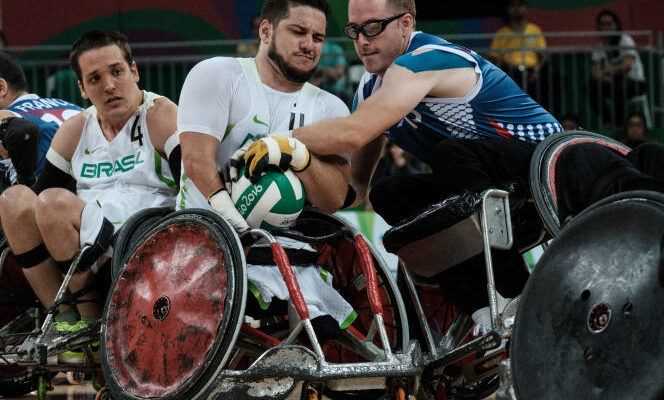No tackles, but physical intensity and shocks just as important as in “classic” rugby. It is not by chance that wheelchair rugby, on the program for the Tokyo Paralympic Games starting Wednesday, August 25, bears the name, even if the rules are different. “Those who play wheelchair rugby are not disabled people who play sports, they are athletes who have a disability”, immediately specifies Olivier Cusin, the coach of the France team since 2010.
Demonstration sport at the Atlanta Games in 1996 then Paralympic sport since those in Sydney in 2000, wheelchair rugby has its origins in the 1970s. At the time, the predominant collective parasport was wheelchair basketball. But Canadian quadriplegic athletes do not find themselves in this sport, at a disadvantage compared to less disabled athletes. They invent the murderball (“Murderous bullet”). “The discipline was created for severe disabilities. They tried to find suitable rules, drawing on different sports, explains Olivier Cusin. Basketball, American football, hockey… But for the physical commitment and the state of mind, it remains above all rugby. “
This murderball is rapidly becoming wheelchair rugby as it is practiced today. Reserved for disabled athletes of the four members, it is played with a volleyball, on a basketball court, in teams of four and in four quarters of eight minutes each.
“Organized mess” and strategy
The principle ? The team that scores the most goals wins the game. A player scores a point when he crosses the goal line – eight meters wide – in possession of the ball. To prevent opponents from scoring, the defending team must try to block the ball carrier, while the attacking team tries to hinder the defenders to clear the way for their player.
“It’s a combat sport, of commitment. The contacts can be quite spectacular, but it is the armchairs which take, not the players ”, relativizes Olivier Cusin, coach of the team of France
As in rugby, contacts are frequent. “It’s a combat sport, of engagement. The contacts can be quite spectacular, but it’s the chairs that take, not the players, puts Olivier Cusin into perspective. In addition, when you watch a game, you can have the impression that it goes all over the place, but the players do not bump into each other at random. It’s an organized mess. ” Wheelchair rugby is also a calculus sport. As with all parasports, athletes should be classified, based on the impact of their disability on their performance. Points are awarded to them, from 0.5 for the person most penalized by their handicap, up to 3.5 for the least penalized. A team cannot line up more than 8 points on the field, but several combinations of points, and therefore of players, are possible. Which makes wheelchair rugby a very strategic game. “I often compare it to a game of chess, admits Olivier Cusin. Even if the action is not over, we are already preparing for the next one. ”
You have 43.3% of this article to read. The rest is for subscribers only.
